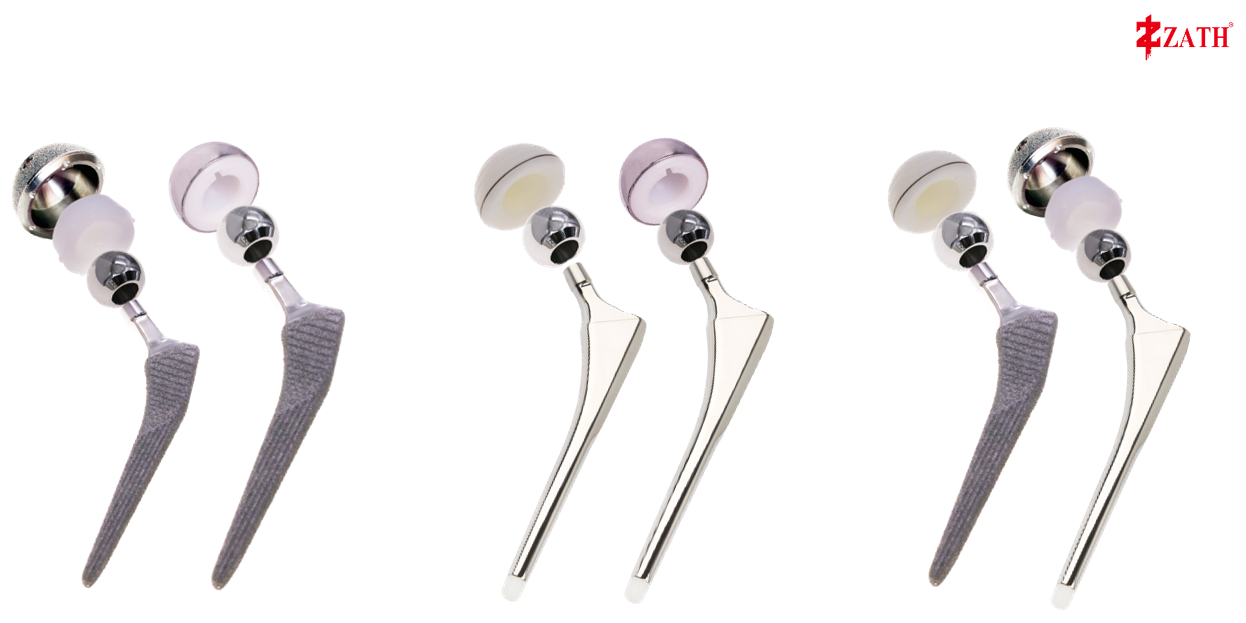Hip Joint Prosthesis are mainly divided into two types: cemented and non cemented.
Hip prosthesis cemented are fixed to bones using a special type of bone cement, making them a popular choice for older or weaker bone patients. This method enables postoperative patients to immediately bear weight, which helps with faster recovery.
On the other hand, non cemented prosthesis rely on the natural growth of bone tissue onto the porous surface of the prosthesis to achieve stability. These types of prostheses are usually more favored by young and active patients because they can promote long-term fusion with bone tissue and may be used for longer periods of time than cement-based prosthesis.
In these categories, there are several designs for Hip implants prothesis, including metal to metal, metal to polyethylene, and ceramic to ceramic. Metal to metal hip implants use metal liner and femoral head, which are durable, but there are concerns about the release of metal ions into the bloodstream. Metal to polyethylene implants combine metal head with plastic liner, ensuring durability and reducing wear. Ceramic to ceramic implants are known for their low friction and low wear rate, and their popularity is constantly increasing due to their durability and biocompatibility.
In addition, there are some special hip implants designed for specific conditions, such as restorative implants that can preserve more natural bone structure, which are suitable for young patients with mild joint injuries.
In summary, the choice of hip joint prosthesis is influenced by various factors, including the patient’s age, activity level, and specific health condition. It is crucial to consult with orthopedic experts in order to determine the most suitable type of hip prosthesis for individual needs, ensuring that hip replacement surgery achieves optimal results.
Post time: Jun-26-2025

